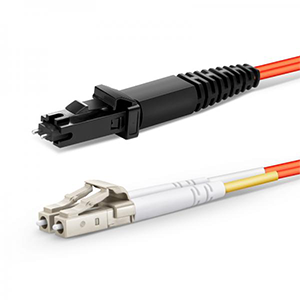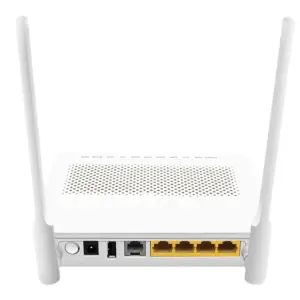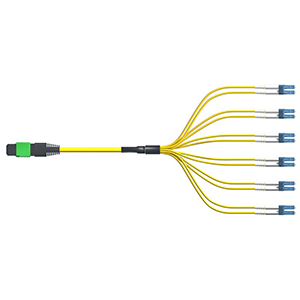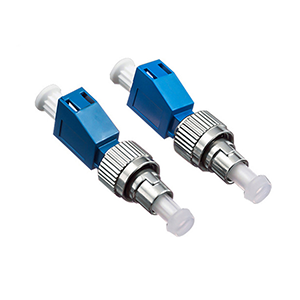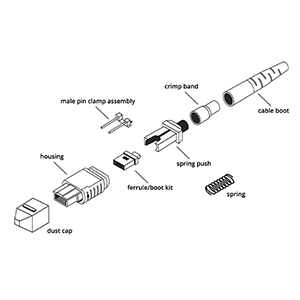QSFP28 undoubtedly plays an important role in high-speed optical networks. This article will explore the compatibility of QSFP28 active optical cables. We will first define the technical specifications and main parameters of the QSFP28 interface and explain the working principle and composition of the QSFP28 active optical cable. Next, we will analyze the compatibility requirements of the QSFP28 interface specifications for active optical cables, explain the compatibility differences of QSFP28 interfaces from different manufacturers, and compare the compatibility of QSFP28 active optical cables with other interface types, such as SFP+, QSFP+ and other old interfaces.
Introduce the requirements for power consumption management of QSFP28 active optical cables and analyze the impact of signal integrity on compatibility. Subsequently, we will explain the importance of industry standard certification testing and introduce common compatibility test methods and detection indicators. Finally, we will propose measures to improve the compatibility of QSFP28 active optical cables from the aspects of product design, manufacturing, and testing, and promote the formulation and update of industry standards.
Basic concepts of QSFP28 interface and active optical cable
Let me introduce you to the basic concepts of QSFP28 interface and active optical cable.
Technical specifications and main parameters of QSFP28 interface:
QSFP28 (Quad Small Form-factor Pluggable 28) is a compact optoelectronic module interface standard with the following main features:
- Physical dimensions are 12.0mm x 18.35mm x 8.5mm
- Supports data transmission rate up to 28Gbps
- Uses 4 parallel 25Gbps photon channels
- Supports both single-mode and multi-mode optical fiber types
- Uses LC optical fiber connector
QSFP28 interface is widely used in 100GbE and 400GbE Ethernet equipment, optical transmission systems and other fields, providing a compact connection solution for high-speed optical interconnection.
QSFP28 active optical cable working principle and composition:
QSFP28 active optical cable is an optical cable product with integrated photoelectric conversion function, mainly composed of the following parts:
- Optical transmitter chip: converts electrical signals into optical signals
- Optical receiver chip: converts optical signals back into electrical signals
- Integrated circuit: provides signal transmission and reception, power regulation and other functions
- Fiber termination: using QSFP28 photoelectric interface
- External cable: with power supply and digital control interface
The active optical cable has a built-in photoelectric conversion chip, which can realize the bidirectional conversion of electrical and optical signals. This integrated design improves the transmission quality and reduces the photoelectric coupling loss. In short, QSFP28 interface and active optical cable are important components of high-speed optical interconnection, providing strong support for large-capacity and high-performance optical transmission applications.
Compatibility issues of QSFP28 active optical cables
Let me analyze the compatibility issues of QSFP28 active optical cables for you in detail.
Compatibility with QSFP28 interface:
(1) QSFP28 interface specification compatibility requirements for active optical cables
- Dimensions, interface shapes, pin distribution, etc. must be fully matched
- Electrical characteristics such as voltage, current, signal, etc. must also be consistent
- Optical performance such as optical power, wavelength range, etc. must be consistent
(2) Manufacturer differences of QSFP28 interfaces
- QSFP28 interfaces produced by different manufacturers may have slight differences
- This may cause some active optical cables to be incompatible
- Careful inspection is required to ensure full compatibility
Compatibility with other connectors:
(1) Compatibility of QSFP28 with old interfaces
- QSFP28 active optical cables are usually not directly compatible with old interfaces such as SFP+ and QSFP+
- A dedicated intermediate adapter is required to achieve connection
(2) Physical size and interface shape do not match
- QSFP28 is larger than interfaces such as SFP+ and cannot be directly inserted
- Even forced insertion may damage the interface
The impact of power consumption and signal integrity on compatibility:
(1) Power consumption management of QSFP28 active optical cables
- Power consumption needs to be strictly controlled within the QSFP28 standard range
- Excessive power consumption may cause insufficient power supply and failure to work
(2) The impact of signal integrity on compatibility
- High-speed signal transmission requires extremely high signal integrity
- Poor signal integrity may cause data transmission errors
In short, the compatibility of QSFP28 active optical cables needs to be strictly checked and verified from multiple aspects to ensure full compatibility with QSFP28 interfaces and other related devices.
Compatibility evaluation of QSFP28 active optical cables
Let me introduce you to the compatibility evaluation of QSFP28 active optical cables in detail.
The importance of industry standard certification testing:
(1) Ensure that the product complies with the QSFP28 specification
- Passing standard certification ensures that the product fully complies with the QSFP28 interface specification
- Thus achieving seamless compatibility with QSFP28 devices
(2) Improve user reliability expectations
- Through certification testing by an authoritative organization, users’ product trust can be enhanced
- Ensure that the product can operate stably and reliably for a long time in actual applications
(3) Gain market recognition and promotion
- Industry standard certification is a pass to enter the mainstream market
- It helps the product to be used in a wide range of application environments
Therefore, it is very important for QSFP28 active optical cables to pass relevant industry standard certification tests.
Common compatibility test methods and test indicators:
(1) Physical property test
- Check whether the size, shape, pin distribution, etc. of the QSFP28 interface meet the standards
- Ensure that it can be firmly plugged into the QSFP28 optical module interface
(2) Electrical performance test
- Measure electrical indicators such as voltage, current, signal amplitude, distortion, etc.
- Ensure that the electrical characteristics fully meet the requirements of QSFP28
(3) Optical performance test
- Test optical indicators such as optical power, polarization loss, wavelength range, etc.
- Meet the optical transmission characteristics of the QSFP28 optical interface
(4) Signal integrity test
- Detect the eye diagram, jitter, distortion and other characteristics of high-speed signals
- Ensure good signal integrity during data transmission
(5) Environmental adaptability test
- Including performance under harsh environmental conditions such as temperature, humidity, vibration, and shock
- Ensure that the active optical cable can operate reliably in actual applications
Through the above comprehensive compatibility tests, it can be ensured that the QSFP28 active optical cable can fully comply with industry standards and achieve seamless interconnection with QSFP28 devices.
Measures to improve the compatibility of QSFP28 active optical cables
Let me introduce you to some measures to improve the compatibility of QSFP28 active optical cables in detail.
Improve compatibility from product design, manufacturing, testing and other aspects:
(1) Product design stage
- Design strictly in accordance with the QSFP28 interface standard
- Ensure that the size, pins, optoelectronic characteristics, etc. fully meet the requirements
- Optimize the signal transmission path and improve signal integrity
(2) Manufacturing process control
- Adopt high-precision manufacturing processes and testing methods
- Ensure the consistency and reliability of the products produced
- Pay attention to the quality of key components such as optoelectronic conversion chips
(3) Comprehensive performance testing
- Comprehensive compatibility testing in accordance with industry standards
- Including physical, electrical, optical, environmental adaptability and other aspects
- Strictly control product quality before delivery to ensure compliance
(4) Regular product upgrades
- Continuously track changes and development trends in industry standards
- Timely upgrade product design and manufacturing processes
- Ensure that products are compatible with the latest standards
Promote the formulation and updating of industry standards:
(1) Participate in the standard formulation process
- Actively participate in the discussion and formulation of standard formulation organizations
- Provide valuable experience in R&D and application practice
- Ensure that standards can better reflect market demand
(2) Promote timely updating of standards
- Pay close attention to the development of industry technology
- Suggest that the standards committee revise the standards in a timely manner
- Ensure that the standards can keep up with the pace of technological progress
(3) Promote industrial chain cooperation
- Establish close cooperation with upstream and downstream enterprises
- Jointly promote the formulation and implementation of industry standards
- Improve the compatibility level of the entire industrial chain
Through the above measures, the compatibility of QSFP28 active optical cables can be effectively improved, providing more reliable interconnection solutions for optical communication applications.
Summary
Ensuring full compatibility between QSFP28 active optical cables and network equipment is crucial for high-speed and stable optical fiber communication networks. Our company has long been focusing on the research and development and production of optical communication equipment and its supporting products, and has rich industry experience. The QSFP28 active optical cable products we provide are at the industry-leading level in terms of compatibility, performance indicators, reliability, etc., and can meet your demanding needs for flexible and efficient network construction.
Whether you need to deploy QSFP28 active optical cables in telecom operator networks, data centers, or enterprise parks, we can provide you with customized solutions. At the same time, our professional team will provide you with a full range of technical support, including product selection, solution design, and equipment installation and maintenance. Contact us now to learn more about the detailed information on QSFP28 active optical cable applications.
QSFP28 Active Optical Cables FAQ
A QSFP28 active optical cable (AOC) is a high-speed, pluggable optical fiber interconnect supporting 100GbE and 400GbE networks.
QSFP28 AOCs incorporate optical-electrical conversion circuitry within the cable assembly for direct connection to QSFP28 ports.
QSFP28 AOCs are designed to work with 100GbE, 200GbE, and 400GbE Ethernet standards, as well as Fibre Channel applications.
QSFP28 AOCs are available with reach capabilities ranging from 100 meters to over 2 kilometers, depending on the cable type.
Yes, QSFP28 AOCs are fully backwards compatible and interoperable with standard QSFP28 network ports.
No, QSFP28 AOCs require the higher-speed QSFP28 interface and cannot be directly used with the older QSFP+ or QSFP ports.
QSFP28 AOCs typically utilize singlemode or multimode fiber, depending on the required reach and network architecture.
AOCs provide longer reach and higher noise immunity than passive copper QSFP28 interconnects.
QSFP28 AOCs should be handled with care to avoid damaging the optical components and connectors.
Key use cases include 100GbE and 400GbE data center uplinks, high-speed cloud computing, and service provider backbone networks.


